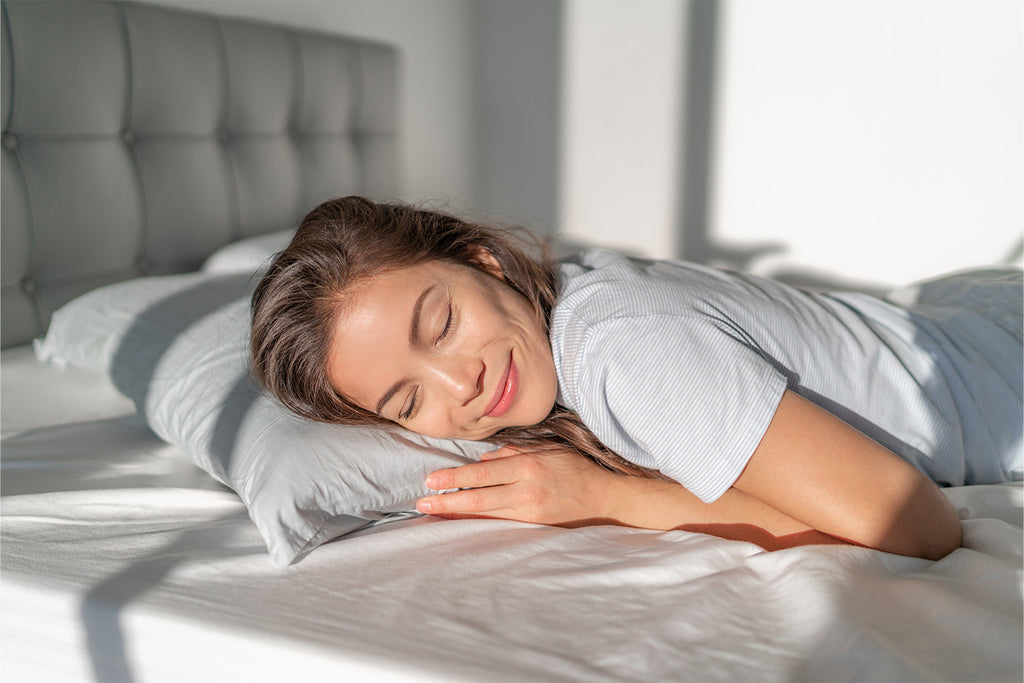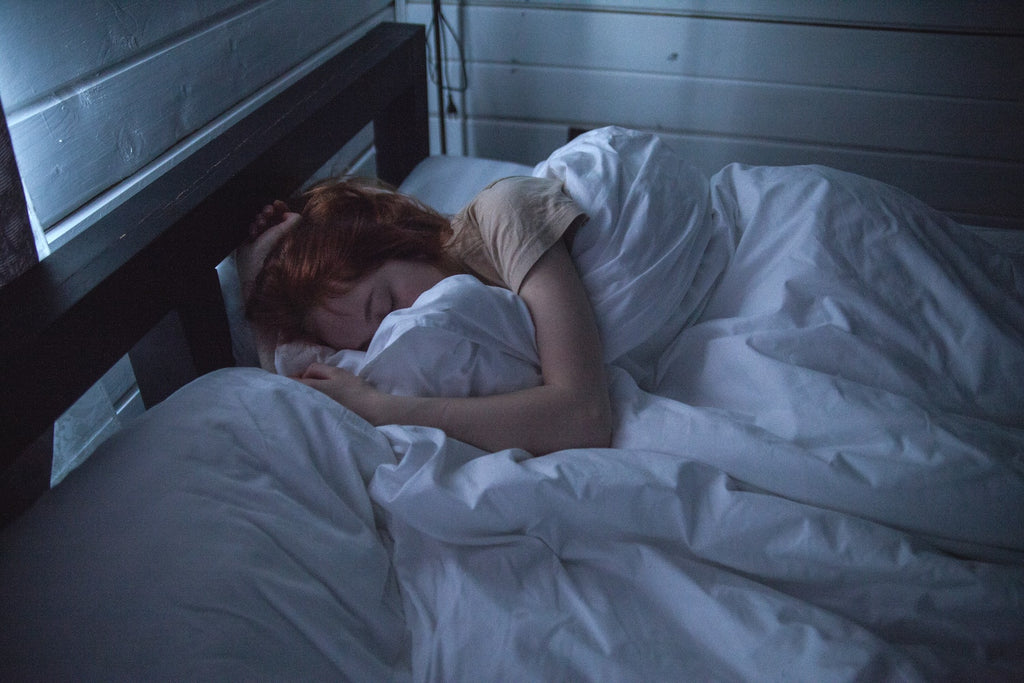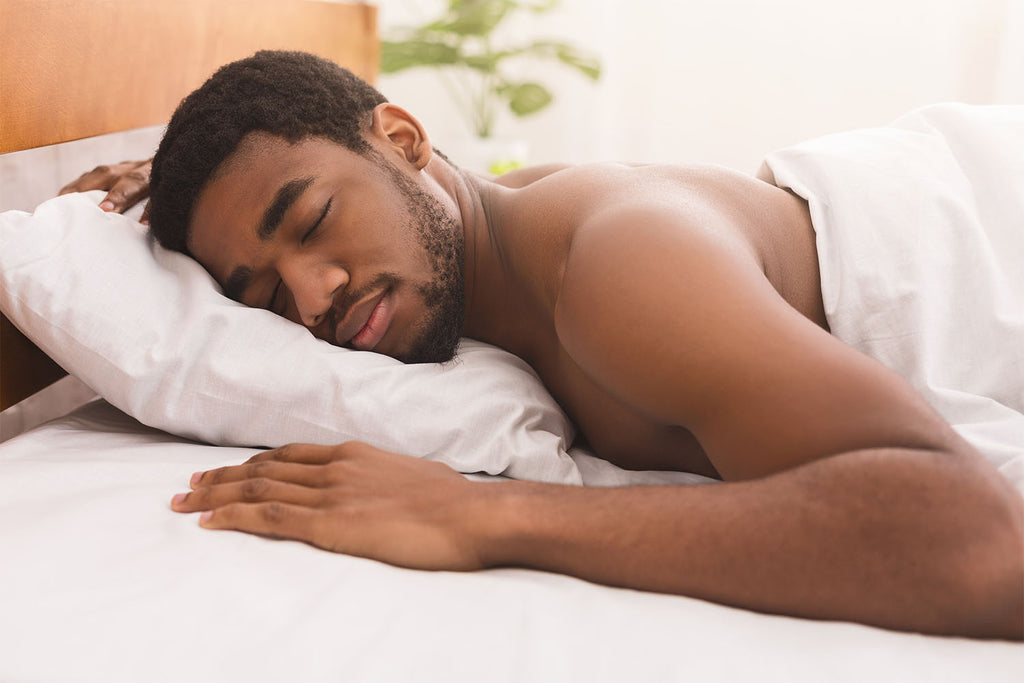
Does Your Body Temperature Rise When You Sleep?

Have you been struggling to get to sleep due to hot flashes and night sweats? Maybe you find yourself too hot to get that shut-eye at night, or maybe you even think your body temperature feels too cool.
You may be wondering, does your body temperature change when you're in deep sleep? Well, the answer is yes and no — which might explain why you’re overheating at night.
Your core body temperature typically cools down when you are trying to get a good night’s sleep. However, when your body is trying to wake you up, your internal temperature will begin to rise.
Keep reading to learn more about how your body regulates temperature during sleep.
Know The Science: How Does the Body Regulate Temperature During Sleep?
It is important to know how your body’s thermoregulation works throughout your circadian rhythm.
Knowing about these temperature fluctuations will not only give you some answers, but it will also give you a better idea of what the human body is doing during sleep. You can use this information to improve your sleep quality.
REM vs. NREM Sleep
When it gets dark, your body automatically starts releasing melatonin, opening up your blood vessels, and preparing for sleep.
When sleepiness finally sets in, and your body starts to prepare itself for the next day, your sleep cycle begins. During this cycle, your body will continuously switch between two modes of sleep: REM and NREM. REM sleep stands for rapid eye movement, while NREM stands for non-rapid eye movement.
There are three stages of NREM sleep, and you undergo these stages at the beginning of your sleep cycle.
The first stage after sleep onset is typically a lighter sleep. The second stage of NREM is a bit deeper, but compared to REM sleep, is still fairly light. The third stage sends you into the deepest sleep of the NREM cycle and is the final stage before entering REM.
REM sleep is the deepest stage of sleep. In this stage of sleep, your heart rate slows, and your body and mind start working to restore themselves. Surprisingly enough, your body temperature actually changes when you reach REM sleep.
The body heat tends to decrease when you are entering NREM sleep and slightly rises in temperature when going into REM sleep. These changes can make you feel too hot or too cold, regardless of the temperature of your sleep environment.
Why This Matters
If you are trying to get to sleep and you find that you are too hot, it could be an indicator that you’re dealing with a chronic sleep problem. Diagnosable sleep disorders are real and treatable medical conditions.
There could be a number of outside factors that impact your body’s ability to cool itself down or warm itself up. If you’re a hot sleeper, don’t worry; we’ll break down some of the causes and how you can work against them so that you are able to get the rest you want and deserve!
Outside Factors: Other Causes for Irregular Body Temperature
Now that you know how and why the body decreases and rises in temperature during sleep, you may be wondering why the description above does not sound like you. Your body and a decrease in its ability to cool down or warm up could be due to anything from an illness to the environmental traits present within your room.
Let’s break down some of these possible causes so you can narrow down what’s preventing you from getting some restful sleep.
Being Sick
In general, when you get sick, your body’s internal thermostat can be out of sorts and tends to rise and fall throughout the day. This type of irregular shift in body temperature can definitely impact your sleep as much as turning the air conditioning off at night.
For instance, if you are trying to get better sleep while sick and your fever suddenly spikes once the sun sets, it can be hard to even think about getting into a deep sleep. The struggle is especially real considering the fact that your body is trying to cool you down in order to get into NREM.
Additionally, if you are dealing with chills as a symptom of being sick, this symptom could impact your body’s ability to warm itself up in order for you to enter REM.
A high fever from being sick could even impact the types of dreams you have by affecting the hypothalamus and other sections of your brain.
These troubling dreams are called fever dreams, and they happen when the body’s temperature becomes too high during REM or when the high body temperature drops and pulls you out of REM.
Some easy ways to bring your body temperature back to normal when you are sick include utilizing over-the-counter medications, such as ibuprofen or any type of nighttime cold and flu medicine. These should knock out some of the symptoms that are preventing your body from regulating its temperatures for sleep.
Environmental Factors
The type of room you are trying to sleep in could impact your body’s internal temperature and your body’s ability to get to sleep.
For example, if you are trying to sleep in a room during the summer that has a high ambient temperature and no AC, your body is going to have a harder time cooling down and trying to enter NREM.
The same goes for a room that is too cold. Sure, you might be able to bundle up in insulating sleepwear and get to sleep with minimal effort, but you may struggle to get into REM. You may even overcompensate for how cold it is and sleep with too many layers. This could lead to an unexpected wake-up in the middle of the night due to how hot your body temperature has become.
You can combat both of these problems with ease.
For example, if you are sleeping in a hot room with no AC, try opening up a couple of windows to get some extra airflow going through the room, thus helping you combat that sleep deprivation. You could even take a cold shower before bed to lower your body temperature a bit.
If you find yourself trying to sleep with the room temperature too hot, make sure you don’t overdo it with a high amount of blankets/layers. While this may feel nice and cozy when you’re trying to get to sleep, it could come back to bite you later on in the night when your body temperature naturally begins to rise.
These are some of the most common ways in which body temperature can get out of sorts when it comes to sleep. If you are looking for some products that help to regulate body temperature, read on for some reliable recommendations.
What Products Work To Regulate Body Temperature?
There are a variety of different bedding materials that have the potential to help regulate your body temperature. In this section, we’ll break down some of the best materials for temperature regulation and some of our products that may be the perfect fit for you.
Memory Foam
One material that is known to help with a person’s body temperature is memory foam.
Memory foam works to trap heat and help the body retain it throughout the night. Since memory foam forms so closely around the body, heat has a hard time escaping the body, which makes a memory foam mattress great for those who struggle with retaining heat at night.
Check out eLuxury’s signature 10” gel memory foam mattress.
Latex
Latex is known for its breathability and the amount of airflow the material produces.
This being so, bedding materials made from latex are ideal for those who tend to be warmer sleepers.
This material does not tend to hug any part of the body too closely, so heat is able to easily escape if that is something you find yourself struggling with.
The airy quality comes from the fact that latex is typically ventilated with small holes, allowing air to flow through the material with ease. If this sounds like something you could benefit from, check out eLuxury’s Latex foam pillows to keep your head cool throughout the night.
These are two of the main materials that are particularly well suited for anyone who struggles with their temperature when it comes to getting proper sleep, but some other options that are good to look out for include bedding materials made from polyfoam and micro coils.
Final Thoughts
Remember that the body goes through natural sleep cycles in which the body’s temperature rises and decreases throughout the NREM and REM cycles.
These could change depending on your environment and whether or not you’re feeling sick, but materials that have natural cooling properties, such as memory foam and latex, could give you an extra hand in regulating body temperature. Come back to this article if you are ever struggling with your body’s temp when trying to get some shut-eye!
Sources:
Fever Dreams: Causes and Meaning | Sleep Foundation




